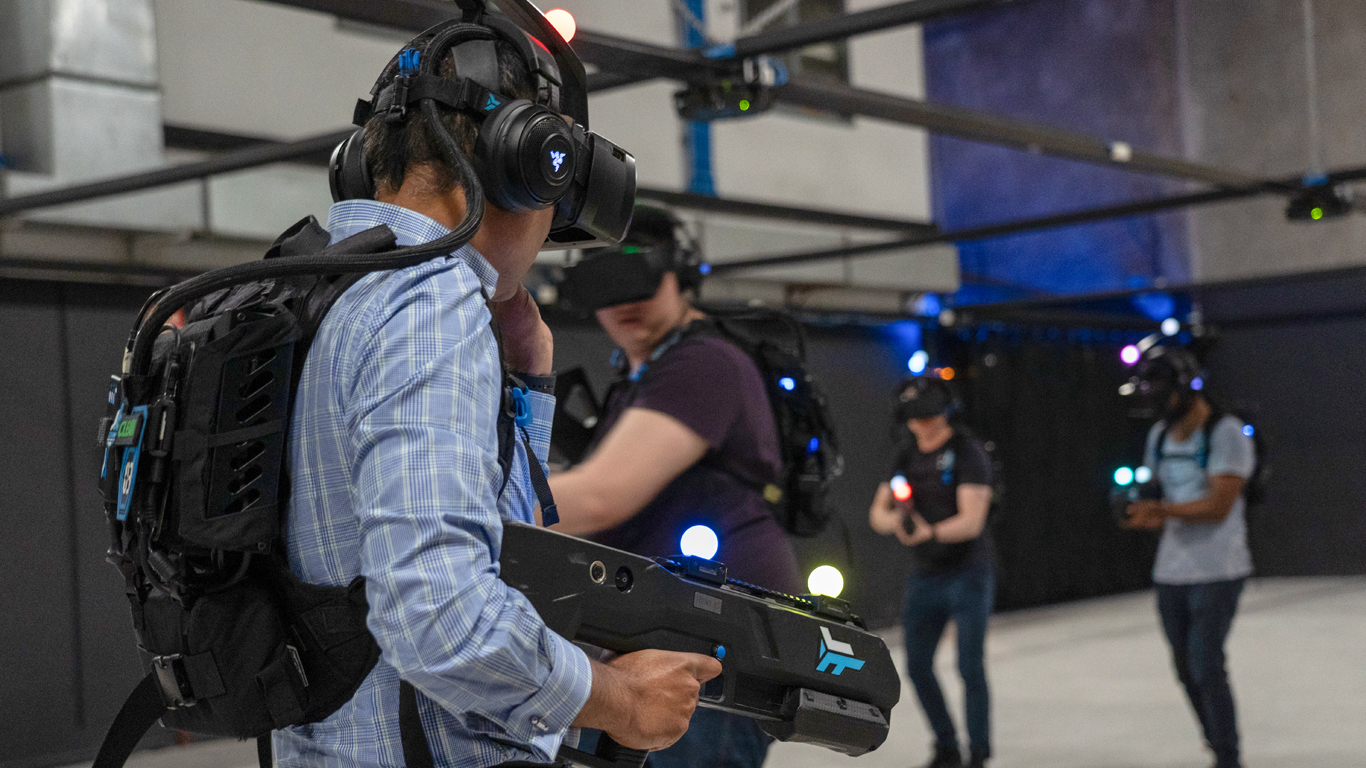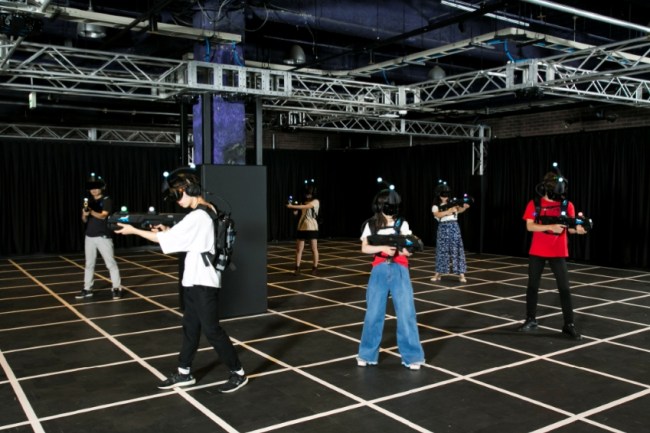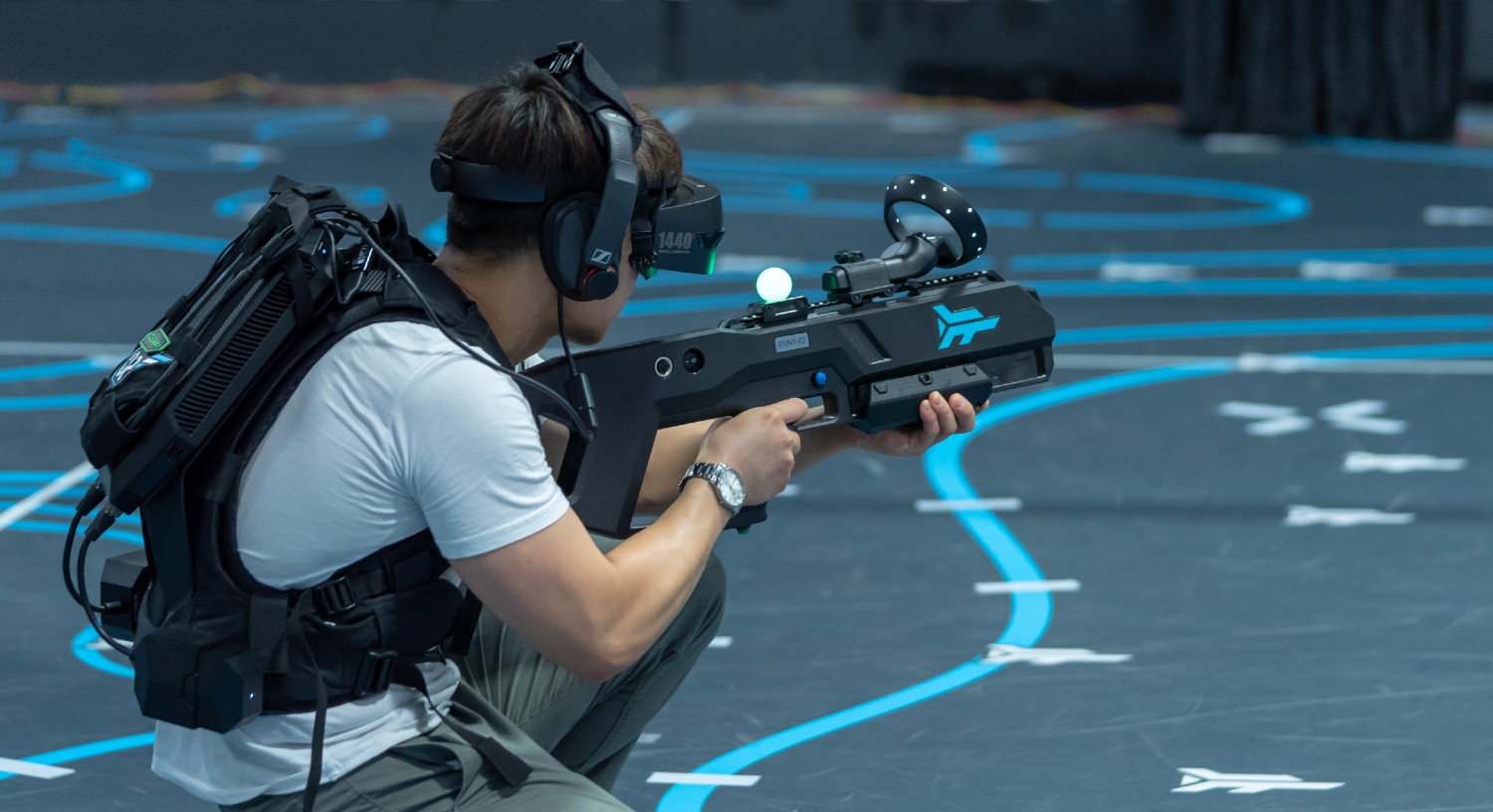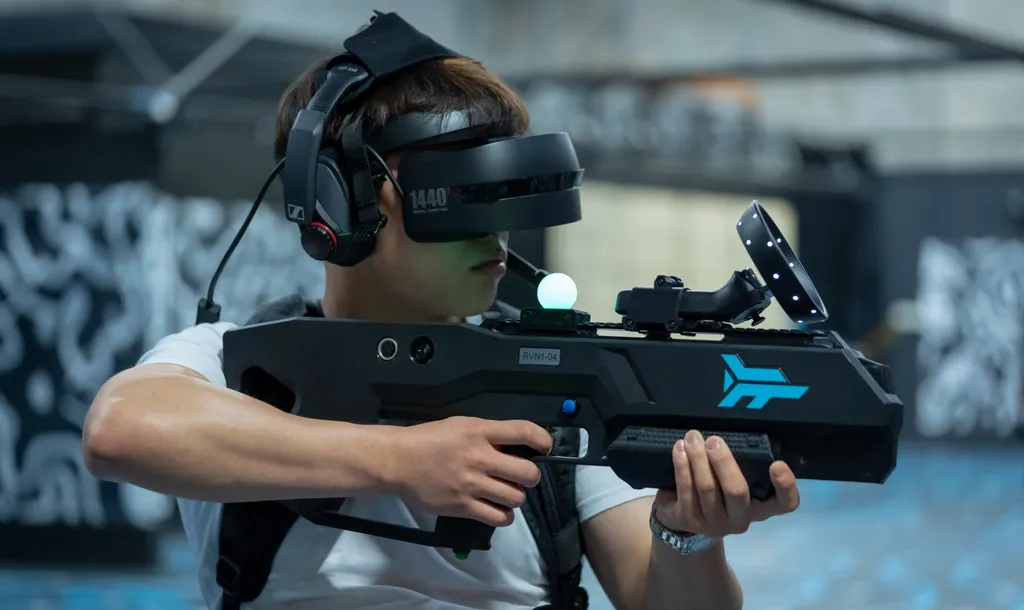VR company Zero Latency is planning to roll out future locations with HP headsets running Microsoft’s inside-out tracking system.
That’s a big technological shift for the Australia-based VR company. Zero Latency supplies operators with VR headsets, backpacks, management software, services and games to run a large-scale multi-user VR attraction. The company first deployed a modified version of the HDK 2 open source headset project. They also built a large-scale positional tracking system “out of need.”

In February, I tried the 1st generation system in a play through at the MGM Grand in Las Vegas. I noted sway to the tracking with sub-par visuals overall compared with mainstream headsets like Oculus Rift and HTC Vive.
Zero Latency CEO Tim Ruse and CTO Scott Vandonkelaar spoke with me over video call about their second generation system. Leaders at the company are trying to grow communities of competitive gamers at their locations in 2019. They believe Microsoft’s tracking system in HP headsets will provide a generally superior experience at a much lower price to operators ($350K down to $200K).
We have yet to try the system which Ruse says they are trialing in Australia now before rolling out to more locations worldwide in the coming months.
1st Generation

Zero Latency’s original system is reminiscent of PlayStation VR. It uses backpacks combined with overhead cameras which Zero Latency said relied on their custom computer vision technology. OptiTrack — the technology deployed in several other VR attractions — was too expensive, they explained on the call. The stages have very dim lighting.
My only other experience with OSVR was awful, so it is downright impressive what Zero Latency did improving upon this base system without the help of OptiTrack, Microsoft, Google or Facebook. The company first opened its large-scale space in 2015 and say they rolled out more than two dozen venues with this system over the last few years.
Zero Latency’s software provide the virtual worlds to visit. Accompanying services provide leaderboards and emails sharing the results the moment a match finishes. Hardware-wise, though, this system is dated compared with consumer-grade hardware deployed in attractions by companies like Dreamscape Immersive, Spaces and The VOID.
2nd Generation

Ruse said they would launch the second generation system with HP headsets in the coming months. Initially, the system would use HP’s first generation PC VR headset. A second generation HP headset would supplant it in the coming months, according to the company.
The stages will be brightly lit to assist with the on-board inside-out positional tracking provided by Microsoft’s Windows-based system. In the video below you can see how the Windows controller is attached to Zero Latency’s gun accessory for tracking.
Marrying Microsoft’s tracking system with Zero Latency’s software and services may be a pretty compelling combination. Technically speaking, Ruse said they see nothing blocking them from deploying their existing software and services on the new hardware with each player providing their own tracking and movements synced up between them over the local network.
Zero Latency’s 1st generation system already includes alerts to let you know when you’re approaching an actual person or physical barrier. Along with the guns used in Zero Latency’s experiences, we’ll be curious to see how everything works in the new system as well as the overall effect on accuracy and competitive gampeplay.


























